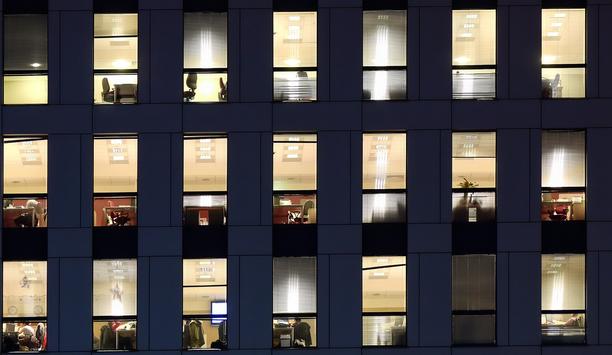 |
| FLIR thermal imaging cameras helped to assure a safe meeting of world leaders in Germany |
The Group of Eight (G8) is an international forum for the governments of Canada, France, Germany, Italy, Japan, Russia, the United Kingdom and the United States. The European Commission is also represented at all the meetings. Together, these countries represent more than half of the world economy. It is one of the most important forums for dealing with global issues.
Heads of State and Government of the leading industrial nations met for the first time in Rambouillet, France in 1975 to discuss developments in the global economy. At that time the world's six or seven largest economic powers were represented. This was the founding moment of the world economic summit.
Today, G8 summits are still the climax of the annual presidency of each state. The range of issues under discussion now covers the whole spectrum of global politics. Foreign and security policy and development issues are discussed in addition to economic matters. The forum has launched a large number of global initiatives, including the campaign against world poverty.
The G8 summit brings together the eight heads of state of the different governments. During the summit discussions are held and decisions are taken about the world's most pressing problems, including climate change, proposals for aid to Africa and what to do about Iran's nuclear program, to name but a few. In 2007, the annual meeting of the heads of government was presided by Germany. It took place in the Baltic resort of Heiligendamm, close to Hamburg.
Extremely high safety and security measures
Needless to say that a summit, which brings together the heads of state of the eight most important economic powers, requires the highest level of security. Not all the decisions taken at the G8 summits are welcomed with enthusiasm by everyone. Protesters try to block the entrance to the conference and try to gain access themselves to the conference grounds. Not to mention the possible threat of a terrorist attack on the premises. Presidents, Prime Ministers and their staff need to be protected against these hazards at all times.
Safety and security measures in place are usually top secret before and during events of these types. It is only after the event that it is possible to get a clearer image of everything which was in place to secure the area.
The 2007 summit took place close to the Baltic Sea. Off the coast, a 32 km exclusion zone was put in place - making it impossible for boats to pass by anywhere near Germany's seaside summit. A two-mile long net in the water made it impossible for more adventurous protesters to swim secretly to the summit location.
But also on land security measures were extremely high. More than 16,000 policemen were deployed to make sure that all heads of state would be safe. The congress hotel was fenced in with an 11 km long security fence, digging deep in the ground to prevent protesters tunnelling their way under it.
Thermal imaging helps to secure the area
Security preparations for the G8 summit were initiated one and a half years before the event by the Interior Ministry of Mecklenburg-Western Pomerania. One of the companies contacted was Siemens Building Technologies in Rostock. The company was asked to deliver and install all video and other electronic security devices needed for a safe conference.
 |
| Over 22 FLIR Systems SR-35 thermal imaging cameras were installed along the security fence |
"They were looking for a local, innovative company", says Mr. Haacker, Director of Siemens Rostock. "Siemens was extremely happy with the order. It was a great sign of confidence in the company and its capabilities."
The installation of Siemens included eleven daylight cameras mounted on a Pan/Tilt mechanism, twenty-two FLIR Systems SR-35 thermal imaging cameras and 8 mobile FLIR Systems FlashSight thermal imaging cameras.
But not only the cameras and equipment for control rooms was installed by Siemens. A part of the area to be monitored consisted of really dense forest. In order to make sure that no one was entering this area, Siemens installed over 3,200 meters sensor wires in the forest soil. An alarm would go off if someone entered the forest.
The twenty-two FLIR Systems SR-35 thermal imaging cameras were installed along the security fence. They were securing the area in front of the fence and were making sure that no one could approach the fence, or even worse climb it. The thermal imaging cameras overlooked the area 24 hours a day.
A thermal imaging camera was installed every 400 meters. The SR-35 is equipped with a 35 mm lens which offers a wide horizontal field of view (20°) combined with an excellent range performance. The SR-35 can detect a human being at a distance of over 500 meters.
The SR-35 cameras were easily integrated in the security network. Their comprehensive images were displayed on one of the monitors in the control room.
The eight FLIR Systems FlashSight handheld thermal cameras were carried by the police when they were patrolling the fence or other secured areas. The FlashSight is a portable thermal imaging camera. Weighing less than 1 kg, it is ideal for go-anywhere operations. It can be used for over 7 hours running on only 4 standard AA lithium batteries.
Thermal imaging: advantages over CCTV
The advantage of thermal imaging cameras over daylight cameras is that they produce a clear image on which the smallest of details can be seen |
The advantage of thermal imaging cameras over daylight cameras is that they produce a clear image on which the smallest of details can be seen. Not only during daytime but also during the night. A thermal imaging camera needs no light whatsoever to operate. It produces an image in the darkest of nights. It can also see through light fog, rain and smoke.
Using thermal imaging cameras to monitor the zone in front of the fence and the fence itself also eliminated the need to install lighting poles. Not only was installing a lighting system along the total distance of the fence an expensive alternative, lighting also lays out a route of attack for potential intruders. Furthermore, they can easily hide in shadows.
No breakdowns
Security needed to be in place 24 hours a day. "If there would have been a defect of one of the cameras or a problem with any other equipment we delivered, we only had had two hours to repair it", says Mr. Schoknecht, head of the project, from Siemens Rostock. "Therefore we also ordered spare parts together with the equipment. We ordered an extra SR-35 thermal imaging camera in case something would go wrong with one of them. However, all thermal imaging cameras performed extremely well so we did not have to use it", continues Mr. Schoknecht.
The entire installation Siemens provided for the G8 worked perfect. They are ready for the next high level security project or for another G8 summit.






